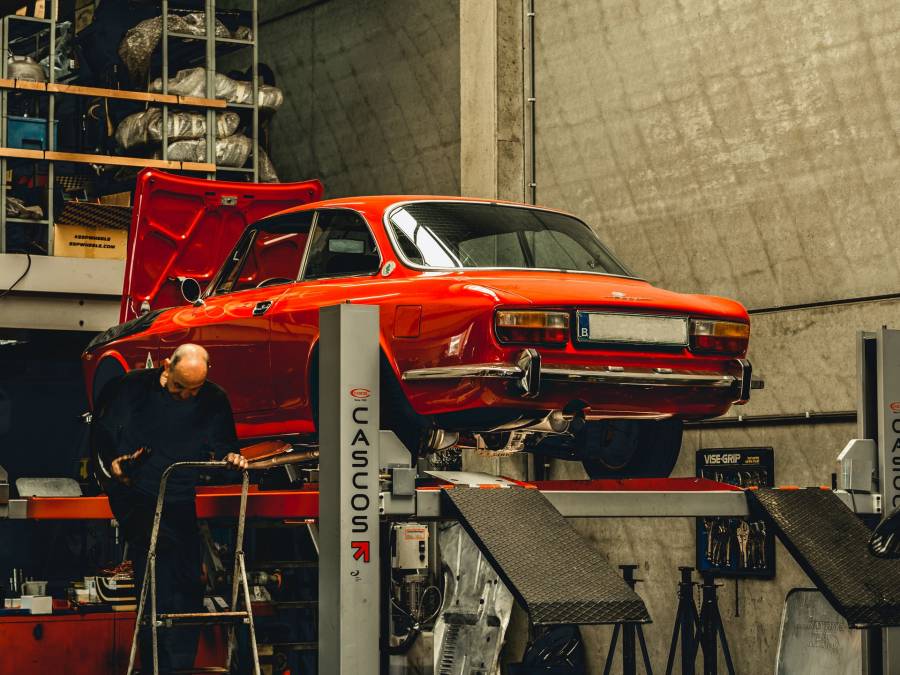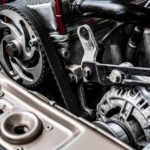Quick Navigation
When it comes to driving, proper braking is essential. If your car isn’t braking correctly, it could lead to dangerous situations on the road.
One of the crucial factors in braking is brake proportioning valve adjustment.
This system helps optimize the pressure applied to each wheel and can be crucial for ensuring a safe stop.

While this process may seem simple, incorrect valve settings can cause your brakes to wear prematurely or fail.
So if you’re experiencing brake issues, make sure to get your proportioning valve adjusted as soon as possible.
Significant Impact Of Brake Proportioning Valve
Brake proportioning valve (BPV) is a valve that regulates the brake pressure. It is located in the master cylinder and has high-pressure and low-pressure settings.
When you apply the brakes, the BPV opens to let air into the system, which reduces the car’s braking force. Over time, this can cause worn or warped rotors and pads.
If your BPV is set too low, it won’t allow enough air into the system to stop your vehicle, which might lead to an accident.
On the other hand, if your BPV is set too high, it will cause the brakes to wear out quickly.
Therefore, it is recommended to have your brake fluid checked at least once a year. If the liquid turns rusty or looks dirty, it may be time for a new BPV.
How Does Brake Proportioning Valve Function?
The brake proportioning valve is a small and simple device that helps the driver maintain a consistent braking force on all four wheels.
When the driver applies the brakes, the valve sends a signal to the ABS (anti-lock braking system) module telling it how firmly to apply the brakes on each wheel.
It prevents skidding and helps ensure that your car comes to a complete stop in less time.
The Performance Brake Controller (PCB) is designed to optimize the vehicle’s braking power by controlling the proportioning valve.
However, the controller is designed to work with stock parts and may require some modification to the brake system.
Tools Used For Adjusting Brake Proportioning Valve
A few tools are essential for increasing the efficiency of brake proportioning valves.
These include a valve-stem gauge, torque wrench, breaker bar, screwdriver, and pliers.
Using these tools can ensure that your valves function at their best and reduce the time needed to stop your vehicle.
Valve-Stem Gauge
If you’re having trouble adjusting your brake valve, a valve-stem gauge may be the solution for you.
This tool measures the distance between the top of the valve stem and the brake shoe.
By finding this measurement, you can adjust your brake valve accordingly.
Torque Wrench
A torque wrench is a multi-purpose tool used for adjusting brake proportioning valves on vehicles.
The required torque for each application will vary depending on the make and model of the vehicle.
Therefore, when using a torque wrench, it is essential to follow the manufacturer’s instructions for setting the appropriate amount of torque.
Breaker Bar Tool
The Breaker Bar tool is a handy tool that you can use to adjust the brake proportional valve on most motorcycles and cars.
This tool is a simple and easy way to get the braking adjustment you need without taking the vehicle apart.
The tool is very convenient and comes with a handle mounted to the brake lever.
Screwdriver And Pliers
If your car’s brake pedal feels spongy or not as responsive as it used to be, it may be time to adjust the brake proportional valve.
This simple task you can do with a screwdriver and pliers tool.
Steps By Step Guide For Adjusting Brake Proportioning Valves
Brake proportioning valve regulates the braking pressure between the front and rear wheels. When it is not adjusted correctly, it can lead to brake failure.
This guide will show you how to adjust your brake proportioning valve step by step.

Step 1
Find the brake proportioning valve on your vehicle. It is usually located near the brake lines or master cylinder.
If you’re having trouble stopping your car, it might be time to check your brake proportioning valve.
This small valve is located on the master cylinder and regulates how much pressure is applied to the brakes.
If it’s not functioning correctly, your car won’t be able to stop as effectively. Locate the master cylinder located inside the engine compartment.
Unscrew the valve cap and remove the old valve.
Step 2
Disconnect the brake lines from the proportioning valve. Each line should have a cap to prevent fluid from spilling out.
Adjusting the brake valves on your vehicle is vital to keep your bike or car stable and in control.
You can adjust the valves without affecting braking performance by disconnecting the brake lines from the proportioning valve.
Brake lines are typically connected to the front brake proportioning valves, but you can also use this method with rear brake proportioning valves.
Step 3
Use a wrench to loosen the screws on the proportioning valve. Be careful not to damage them, as they will need to be the re-tight end later.
When adjusting the brake valves on your car, it can be fiddly to get the screws loose. The screws are often quite tight, and they can be challenging to turn.
In some cases, the screwdriver might slip out of your hands, or it might damage the screw.
If you have trouble loosening the screws, try using a different screwdriver or a different method. You might also want to ask someone for help.
Step 4
Gently turn the valves counterclockwise to release them from the line. Then, turn them clockwise to tighten them back into place.
If you find that the brake pads are not engaging the disks as well as they should, it may be due to a clogged or worn brake line.
One way to clear the line is to turn the valves counterclockwise, which will release them from the line and allow for adjustment.
Step 5
Reconnect the brake lines to the proportioning valve. Please start with the furthest line from the master cylinder, and work your way back to it.
If the brake pads are not engaging the disks as they should, it may be due to a few different factors.
One reason could be that the brake pads have been worn down and need to be replaced.
Another possibility is that something may be blocking the pads from coming into contact with the disk, such as dirt or rust.
Finally, if the brake fluid is low, it will not be able to create enough pressure to activate the brake pads.
One possibility is that the parking brake cable has become loose or frayed.
Step 6
Turn on your vehicle and verify that your brakes are working correctly by releasing your foot from the pedal.
Brakes are one of the essential safety mechanisms on a car. Therefore, it’s vital to ensure that they’re in good condition and functioning correctly.
Brakes that don’t work correctly can cause a vehicle to skid or even crash. Therefore, after adjusting Brake valves, it is vital to check their functionality.
Conclusion
Brake proportioning valves are essential for the overall efficiency of your car.
Therefore, it is crucial to be aware of the steps necessary to adjust them and seek professional help if needed.
Doing so can help improve your car’s performance on the road. A proportioning valve is an integral part of a car’s braking system.
It helps to ensure that the brakes are applied evenly and helps to prevent the vehicle from skidding.
If you have any questions about your car’s braking system, consult a mechanic first.
You can also look out for the mentioned step, which can assist you in adjusting brake valves.

Patrick started his love affair with cars in his childhood. Over the years, he claims a sturdy hold on his driving skills, along with a thorough understanding of cars. We can expect some interesting, holistic, and pleasurable blogs with his flair for writing and his love for cars.
Being a car enthusiast, Patrick has experience comprising of two decades in which he has ridden some of the meanest and strongest machines in the automotive industry. His previous avatars include an automotive professional, photographer, and journalist, and you will certainly experience the roundness of experience in his piece on this site.
In his second decade of reviewing cars and analyzing tools, Patrick is all set to give you convincing, reliable, and the latest information regarding what’s happening in the automotive industry. Currently, he owns a BMW Z3 but cannot get his eyes off Aston Martin DB5. He is a car enthusiast; he loves cooking and listening to music, especially jazz. Here are some of the pieces written by our ace author.






